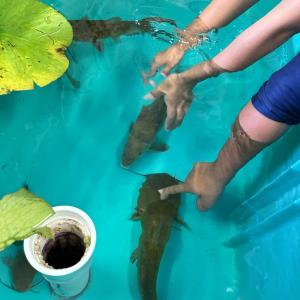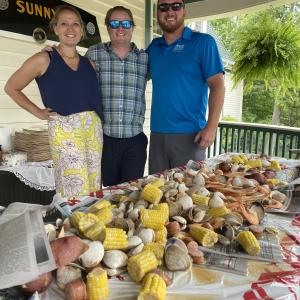It has been said that the eastern end of Lake Ontario boasts one of the best sunsets of the entire eastern United States. From the sandy dunes of Henderson in mid-October, the sun sets just shy of 6:30PM over 180 miles of uninterrupted water; the entire length of Lake Ontario. Cape Vincent’s Tibbetts Point shares a similarly spectacular sunset, whose longest uninterrupted horizon spans 100 miles of open water. Needless to say, if you haven’t experienced a sunset at the iconic Tibbetts Point Lighthouse, then be sure to add it to your list.
With the vastness of the Great Lakes to the west, it’s no wonder why the eastern end of Lake Ontario is such a bird watcher’s paradise. The diverse and varied habitats along the shores of Cape Vincent provide respite and refueling for countless species that can’t muster crossing such expanses of open water without a break during their annual migrations. It’s here that the depths of Lake Ontario meet the confines of the mighty St. Lawrence and its sprinkling of islands. This region’s impressive mosaic of grasslands, wetlands and forests interface with these bodies of open water to create a safe haven for raptors, shorebirds, waterfowl and songbirds. This is the primary leg of the Atlantic Flyway, and these birds hug the lake shore when flying over and through Jefferson County.
It’s also not surprising that this area appeals to more than just our feathered friends. Over the previous decades, those stunning sunsets and natural waterscapes have propelled residential development along the delicate shores of Lake Ontario. Additionally, the rich, low-lying plains off Lake Ontario support intensive agriculture, and denuded shorelines and monoculture crops now abound in many areas adjacent to the lake. The open bucolic aesthetic of simpler days is no longer. While these consumptive land uses are contributors to the local economy, it is more vital now than ever before to contemplate the values of a balanced and healthy environment. This could be for water quality, clean air, bird habitat, erosion protection, or any of the numerous ecosystem services that we often take for granted.

Over the coming months, TILT will be doing just that. Working with several private landowners, TILT will be adding four new parcels to its existing wildlife refuge on Fuller Bay in Cape Vincent. These additions will bring the 53-acre Preserve to a new total of 361-acres. The new acquisitions include a 69-acre forest and shrubland parcel on the Preserve’s northern boundary, a 27-acre grassland and forest tract on its western boundary closest to Tibbetts Point, a 210± acre cropland property on its eastern and southern bounds, and a 3± acre waterfront wetland parcel adjacent to Fuller Bay.
Once conserved, the diverse refuge will undergo a multi-year ecological restoration. More specifically, the 210± acre cropland property, which is currently subject to the intensive row crop practices of regular tilling, disking and fertilizing, will be reseeded with a native conservation grassland seed mix and managed to promote grassland-dependent songbirds and raptors.
In the coming years, TILT also anticipates conducting successional management on the 69-acre and 27-acre tracts. TILT’s stewardship team plans to rehabilitate the lands, currently inundated with invasive woody shrubs and vines, for vibrant regrowth of native plants. In turn, it’s expected that the cropland and invasive restoration efforts will promote greater biodiversity of flora and fauna, improve local water quality, rejuvenate soil health and provide a greater quality of life for those living in or visiting the Cape Vincent area.
Put simply, TILT endeavors to conserve this genuinely irreplaceable landscape, to restore its natural vigor and beauty, and to protect and maintain it that way, forever. So when you visit Tibbetts Point for that remarkable sunset, be sure to also soak up the jaunty trills of the sparrows, the colorful reflections of the clean water, and that fresh lake breeze.




